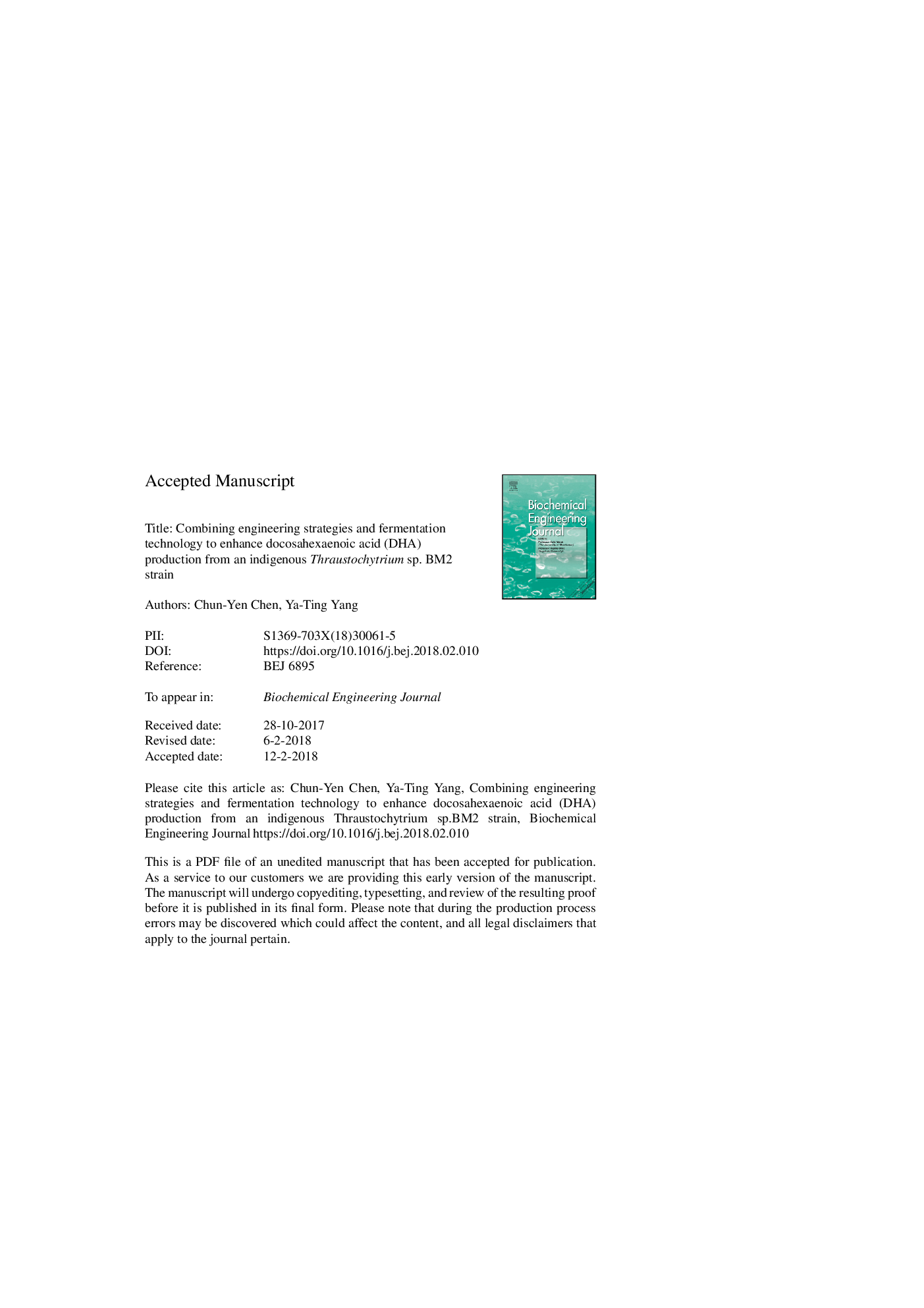| Article ID | Journal | Published Year | Pages | File Type |
|---|---|---|---|---|
| 6482239 | Biochemical Engineering Journal | 2018 | 32 Pages |
Abstract
The DHA productivity of Thraustochytrium sp. BM2 was improved by optimizing the bioreactor operation conditions. The effects of agitation rate and aeration rate on the microalgal growth and DHA production were first studied in 5-L stirred-tank fermenter. The results showed that 100â¯rpm agitation and 1.2â¯vvm aeration (i.e., kLaâ¯=â¯27â¯Â±â¯1.1â¯hâ1) achieved the highest biomass (4590â¯mg/L/d) and DHA (379â¯mg/L/d) productivities. Next, using an optimal glucose concentration (60â¯g/L) led to the highest biomass (5580â¯mg/L/d) and DHA (457â¯mg/L/d) productivities. The cellular DHA content decreased when increasing the agitation rate, probably due to the sensitivity of this strain to the shear stress. The effect of pneumatic and mechanical agitation under the same kLa was studied with two different types of fermenters (stirred-tank and air-lift) and cultivation in air-lift fermenter resulted in better biomass production (27.57â¯g/L), cellular DHA content (13.1%) and DHA productivity (610â¯mg/L/d).
Related Topics
Physical Sciences and Engineering
Chemical Engineering
Bioengineering
Authors
Chun-Yen Chen, Ya-Ting Yang,
